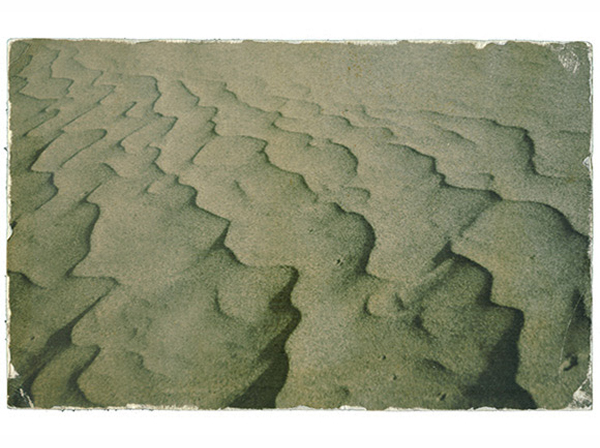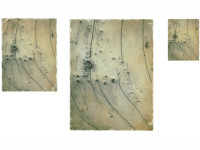
“One”: Guo Peng solo exhibition
|
The Nostalgia Effect By Federica Chiocchetti Guo Peng is a Chinese artist based in Nanjing who graduated from the Department of sculpture at Yunnan Arts University. His work reflects his promiscuous range of interests in photography, video, installation and painting. For him photography is an ‘ideology converter’, as it transforms the photographed object’s ‘material properties’ into ‘ideological and consciousness properties’, that he carries with him. “There are some moments in your life that touch you so deeply that you want to seize them and keep their memory.” In his series Standstills he photographed objects, such as books, stones, clocks, lights, but also elements of landscape and shadows. People are almost inexistent in his images; objects give him a higher sense of security and inner peace. When he started developing and printing his photoworks he realized that he wasn’t satisfied with selecting and producing only one image per object. He also felt the need to spend more time with his photographs. So he printed his photographs in many different sizes, although mainly small, showing the same object or scenery from various angles and perspectives, and started to always carry them in his bag. “I wanted to scrutinize and play with them as I wished. They were my companions and, over time, began to naturally gain little scratches, tears and damages.” Just like when you carry your relatives’ photos in your wallet and look at them occasionally, at times intentionally, at other times they simply pop up while you are desperately searching for something else. They are there, exposed to time and space, and they will inevitably accumulate the ravages of both, like any other object. “I shall thank photography – says Guo Peng – for giving me this fascinating opportunity to explore my relationship with ‘objects’.” And his photographs become indeed ‘tangible specimens of subjective realities’, as highlighted by Chinese art expert Monica Dematté. It is somehow a mystery the level of intervention he operates on the prints. Whether he leaves them to naturally show signs of deterioration or he actually accelerates the enhancement of their fragility, they reach a poetic yet humble status. Their ‘old simplicity’ encourages the viewer to engage with them at a more personal level and their serial multiplicity appeal to the collective imagination of the multifarious viewpoints with which we can observe what surrounds us, revealing the subtle, at times almost schizophrenic, dynamics of our gazes. At a deeper level I believe they create a somewhat artificial nostalgia effect both in the artist and in the viewer. In a conversation with his friend, artist Luo Fei, the latter points out how Guo Peng seems to be interested in showing photography’s ability to get closer to eternity by displaying fragility and increasing the ‘oldness’ of his photographs. “By using smallness to overcome largeness, and stillness to defeat movement, I want to see the world in a grain of sand, heaven in a flower, and get back to what is known as Zen wisdom.” Guo Peng’s focus on objects is not dictated by an interest in material goods, but in the way they coordinate with the world, which he calls “coordinating with aesthetics”, claims Luo Fei. Perhaps “coordinating with nostalgia” too. Milan Kundera, in his masterpiece Ignorance,writes about nostalgia looking back at its etymology: “The Greek word for ‘return’ is nostos. Algos means ‘suffering.’ So nostalgia is the suffering caused by an unappeased yearning to return.” An ‘irrepressible yearning to return’, which ‘suddenly reveals […] the existence of the past, the power of the past’, I believe permeates Guo Peng’s imagery. He wishes to return to a state of simplicity, to restrain life to a basic level, and think more about how to savour the solitude of dealing with one’s own past and memory, which is clearly reflected in the very act of looking back at his photographs that he carries with him. We can access our past only through memory. And memory is narrative: filtered, at times blurred or fragmented and always subjective. It seems that seizing moments with photography alone is not appeasing for him; perhaps lurking behind his ‘photo-ageing’ practice there is the unconscious desire to produce, and consume himself, the artifice of enhanced nostalgia in the very act of looking at his photographs. Unlike more patently fictional photographs, Guo Peng images’ artificiality is so subtle and embedded in the process, rather than the subjects, that it feels almost whispered. What is the effect on us, the viewers, once we learn that these seemingly old, dreamland photographs are somewhat virtual? Are we willing to suspend our disbelief? Is there any disbelief to suspend?
|
 |

